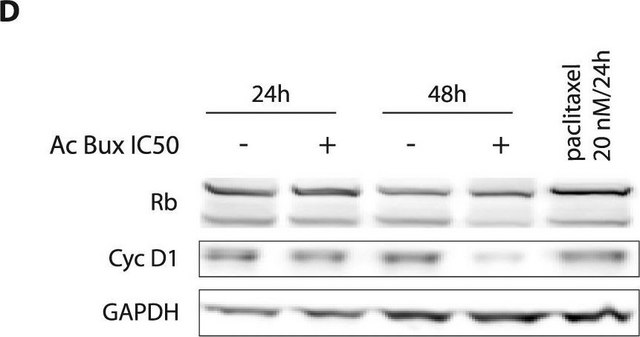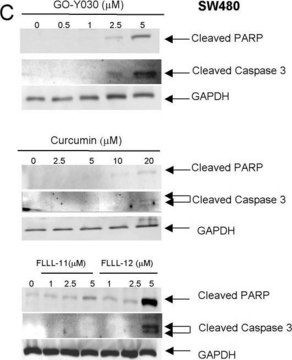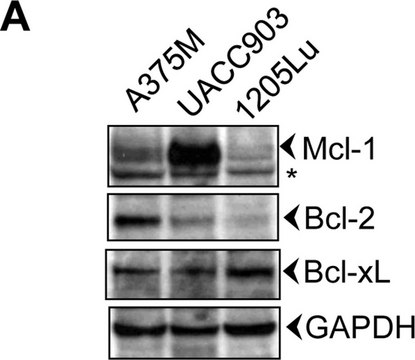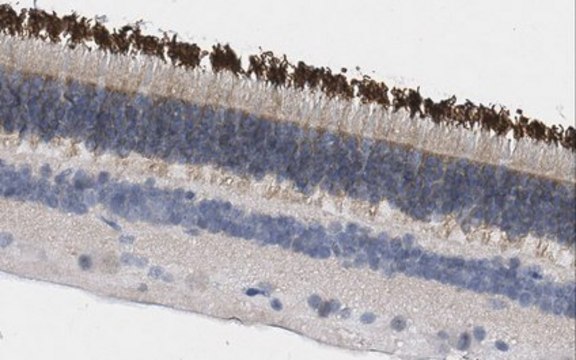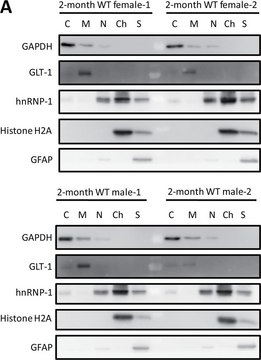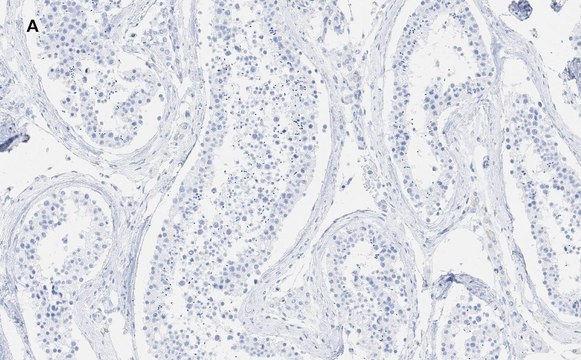MAB5346
Anti-RAR alpha Antibody, clone 76
clone 763, Chemicon®, from mouse
Synonym(s):
RARalpha
Sign Into View Organizational & Contract Pricing
All Photos(1)
About This Item
UNSPSC Code:
12352203
eCl@ss:
32160702
NACRES:
NA.41
Recommended Products
biological source
mouse
Quality Level
antibody form
purified immunoglobulin
antibody product type
primary antibodies
clone
763, monoclonal
species reactivity
human, rat
manufacturer/tradename
Chemicon®
technique(s)
immunohistochemistry: suitable
western blot: suitable
isotype
IgG1
NCBI accession no.
UniProt accession no.
shipped in
wet ice
target post-translational modification
unmodified
Gene Information
human ... RARA(5914)
Specificity
Reacts with Retinoic Acid Receptor, alpha isotype. By Western blot MAB5346 recognizes a ~48 kDa band in rat brain hippocampal homogenate.
Immunogen
Peptide from the N-terminus of human Retinoic Acid Receptor, alpha isotype.
Application
Anti-RAR alpha Antibody, clone 763 is a Mouse Monoclonal Antibody for detection of Retinoic Acid Receptor also known as RAR alpha & has been validated in WB & IHC.
Research Category
Epigenetics & Nuclear Function
Epigenetics & Nuclear Function
Research Sub Category
Transcription Factors
Transcription Factors
Western blotting
Immunohistochemistry
Optimal working dilutions must be determined by end user.
Immunohistochemistry
Optimal working dilutions must be determined by end user.
Physical form
Format: Purified
Purified immunoglobulin. Liquid in 10 mM HEPES (pH 7.5), 150 mM NaCl, 100 μg/mL BSA, 50% glycerol.
Storage and Stability
Maintain at -20°C in undiluted aliquots for up to 12 months. Avoid repeated freeze/thaw cycles.
Other Notes
Concentration: Please refer to the Certificate of Analysis for the lot-specific concentration.
Legal Information
CHEMICON is a registered trademark of Merck KGaA, Darmstadt, Germany
Disclaimer
Unless otherwise stated in our catalog or other company documentation accompanying the product(s), our products are intended for research use only and are not to be used for any other purpose, which includes but is not limited to, unauthorized commercial uses, in vitro diagnostic uses, ex vivo or in vivo therapeutic uses or any type of consumption or application to humans or animals.
Not finding the right product?
Try our Product Selector Tool.
recommended
Product No.
Description
Pricing
Storage Class
10 - Combustible liquids
wgk_germany
WGK 2
Certificates of Analysis (COA)
Search for Certificates of Analysis (COA) by entering the products Lot/Batch Number. Lot and Batch Numbers can be found on a product’s label following the words ‘Lot’ or ‘Batch’.
Already Own This Product?
Find documentation for the products that you have recently purchased in the Document Library.
Zebrafish blastomere screen identifies retinoic acid suppression of MYB in adenoid cystic carcinoma.
Joseph Mandelbaum et al.
The Journal of experimental medicine, 215(10), 2673-2685 (2018-09-14)
Pluripotent cells have been used to probe developmental pathways that are involved in genetic diseases and oncogenic events. To find new therapies that would target MYB-driven tumors, we developed a pluripotent zebrafish blastomere culture system. We performed a chemical genetic
The nuclear transcription factor RARalpha associates with neuronal RNA granules and suppresses translation.
Chen, N; Onisko, B; Napoli, JL
The Journal of Biological Chemistry null
Na Chen et al.
FASEB journal : official publication of the Federation of American Societies for Experimental Biology, 22(1), 236-245 (2007-08-23)
Differentiation and patterning in the developing nervous system require the vitamin A metabolite all-trans-retinoic acid (atRA). Recent data suggest that higher cognitive functions, such as creation of hippocampal memory, also require atRA and its receptors, RAR, through affecting synaptic plasticity.
Epidermal growth factor receptor (EGFR) is overexpressed in high-grade dysplasia and adenocarcinoma of the esophagus and may represent a biomarker of histological progression in Barrett's esophagus (BE).
Cronin, J; McAdam, E; Danikas, A; Tselepis, C; Griffiths, P; Baxter, J; Thomas, L; Manson et al.
The American Journal of Gastroenterology null
Our team of scientists has experience in all areas of research including Life Science, Material Science, Chemical Synthesis, Chromatography, Analytical and many others.
Contact Technical Service